ARFF Daily News
Published on:
Tuesday the 11th of February, 2025
1 dead after Vince Neil's plane crashes into another jet at Scottsdale, Arizona, airport
By Kiki Intarasuwan - CBS News
One person was killed and at least three others were injured in Scottsdale, Arizona, after a business jet — owned by Vince Neil of the band Mötley Crüe — crashed into another plane as it landed on Monday.
The Federal Aviation Administration said the Learjet 35A veered off the runway as it arrived at Scottsdale Municipal Airport around 2:45 p.m. It hit a Gulfstream 200 business jet that was parked on private property, officials said at a news conference.
An airport spokesperson said the left main gear of the small jet failed at landing.
Neil was not onboard the plane, which had departed from Austin, Texas, according to the singer's spokesperson.
First responders attended to five patients, according to Capt. Dave Folio of the Scottsdale Fire Department. One person was pronounced dead and three others were transported to a local hospital. One person refused medical treatment, Folio said.
A statement posted to social media by Mötley Crüe said the person killed was the pilot and that Neil's girlfriend and a friend of hers were both on board and were injured. However, that post was taken down and replaced with a statement that did not identify any of the passengers or specify who had been killed or injured. According to that statement, there were four people aboard Neil's jet — two pilots and two passengers.
"More specific details regarding the collision are not available as this is a rapidly evolving situation and there is an ongoing investigation," the updated statement said. "Mr. Neil's thoughts and prayers go out to everyone involved, and he is grateful for the critical aid of all first responders assisting today."
The National Transportation Safety Board will be taking over the investigation.
The PGA Tour's Phoenix Open was held over the weekend in Scottsdale. It is typically one of the busiest times of year for the airport.
There are no commercial flights or airline service at the airport, according to its website, but it is home to many of the region's corporate aircraft.
https://www.cbsnews.com/news/scottsdale-arizona-deadly-plane-crash/

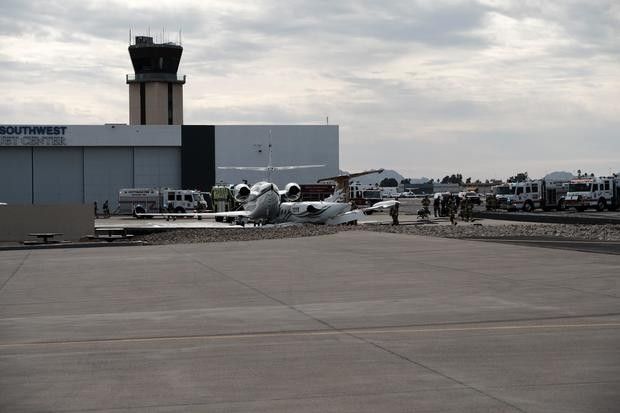
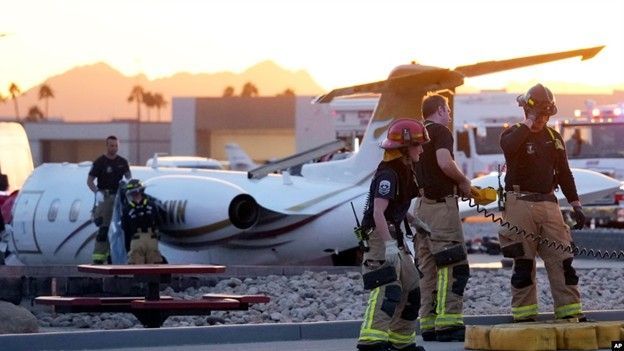
‘Engine problems’ cause small plane to make emergency landing in Tooele Co.
by: Trevor Myers
TOOELE COUNTY, Utah (ABC4) — A small plane made an emergency landing in Tooele County on the afternoon of Monday, Feb. 10.
Officials with the Tooele County Sheriff’s Office responded to an area near Rowley Road for an “aircraft emergency.” No injuries have been reported.
“Unfortunately the pilot and his copilot had to make an emergency landing due to engine problems and communication issues,” the sheriff’s office said on social media.
ABC4.com is working to learn more about the situation.
https://www.abc4.com/news/northern-utah/small-plane-landing-tooele/
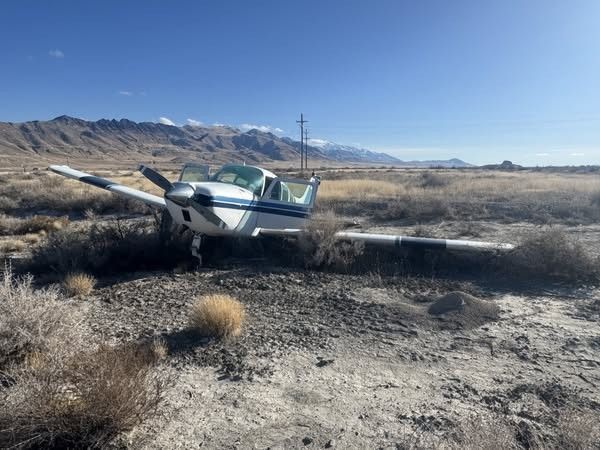
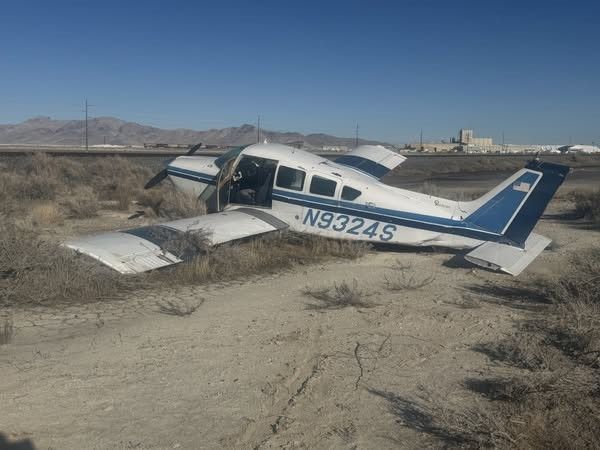
Small Plane Crash Reported At Doylestown Airport
The plane crashed in a vacant lot in the 3800 block of Old Easton Road Monday morning, firefighters report.
Jeff Werner, Patch Staff
BUCKINGHAM TOWNSHIP, PA — The pilot of a small plane escaped injury when his aircraft crashed in a vacant lot adjacent to the Doylestown Airport Monday morning as he was attempting to make an emergency landing.
Buckingham Township Police, the Central Bucks Emergency Medical Services, and Doylestown Fire Company No. 1 responded to the 3800 block of Old Easton Road just after 11 a.m. for the report of a small-engine plane crash.
Upon arrival, authorities discovered the plane overturned in a gravel parking lot. The pilot was able to exit the plane on his own without any injuries, Buckingham Police reported.
Preliminary findings suggest the plane encountered mechanical problems shortly after takeoff, police said. The pilot reported that he was attempting to make an emergency landing and was returning to the airport when the crash occurred.
The investigation has been handed over to the FAA, with Buckingham officials still on scene to assist.
https://patch.com/pennsylvania/doylestown/pilot-escapes-injury-small-plane-crash-doylestown-airport

FAA reinstates 'Notice to Airmen' pilot message name, reversing Biden decision
WASHINGTON, Feb 10 (Reuters) - The Federal Aviation Administration said on Monday it is reversing a four-year-old decision to rename safety messages to pilots and reinstating the prior "Notice to Airmen" term.
In December 2021, the FAA under former President Joe Biden renamed the messages "Notices to Air Missions," commonly known as NOTAMs, saying it was "inclusive of all aviators and missions."
The FAA referred questions to the notice disclosing the name change that did not offer a rationale for the change. NOTAMs contain essential information for pilots and others involved in flight operations but not known far enough in advance to be publicized by other means.
The FAA is also renaming on aeronautical charts the Gulf of Mexico as the "Gulf of America" and Denali, Alaska natives' name for North America's tallest mountain, as "Mount McKinley" after a Trump order. The FAA said in a notice Monday, opens new tab it is in the process of updating its charts and data to reflect the name change.
Some Republicans criticized the 2021 NOTAM name change. Senator Ted Cruz said "instead of focusing on safety" the FAA was working to change the name to "signal its virtue."
Earlier this month, the NOTAM system resumed operations after temporarily going down. Safety messages include items such as taxiway lights being out at an airport, nearby parachute activity or a specific runway being closed for construction.
A NOTAM outage in January 2023 led to the first nationwide U.S. ground stop since 2001, disrupting more than 11,000 flights.
Last month, President Donald Trump suggested without evidence that the deadly midair collision of two aircraft in Washington killing 67 was the result of the FAA's efforts to hire a more diverse workforce.
Earlier this month, the NOTAM system resumed operations after temporarily going down. Safety messages include items such as taxiway lights being out at an airport, nearby parachute activity or a specific runway being closed for construction.
A NOTAM outage in January 2023 led to the first nationwide U.S. ground stop since 2001, disrupting more than 11,000 flights.
Last month, President Donald Trump suggested without evidence that the deadly midair collision of two aircraft in Washington killing 67 was the result of the FAA's efforts to hire a more diverse workforce.
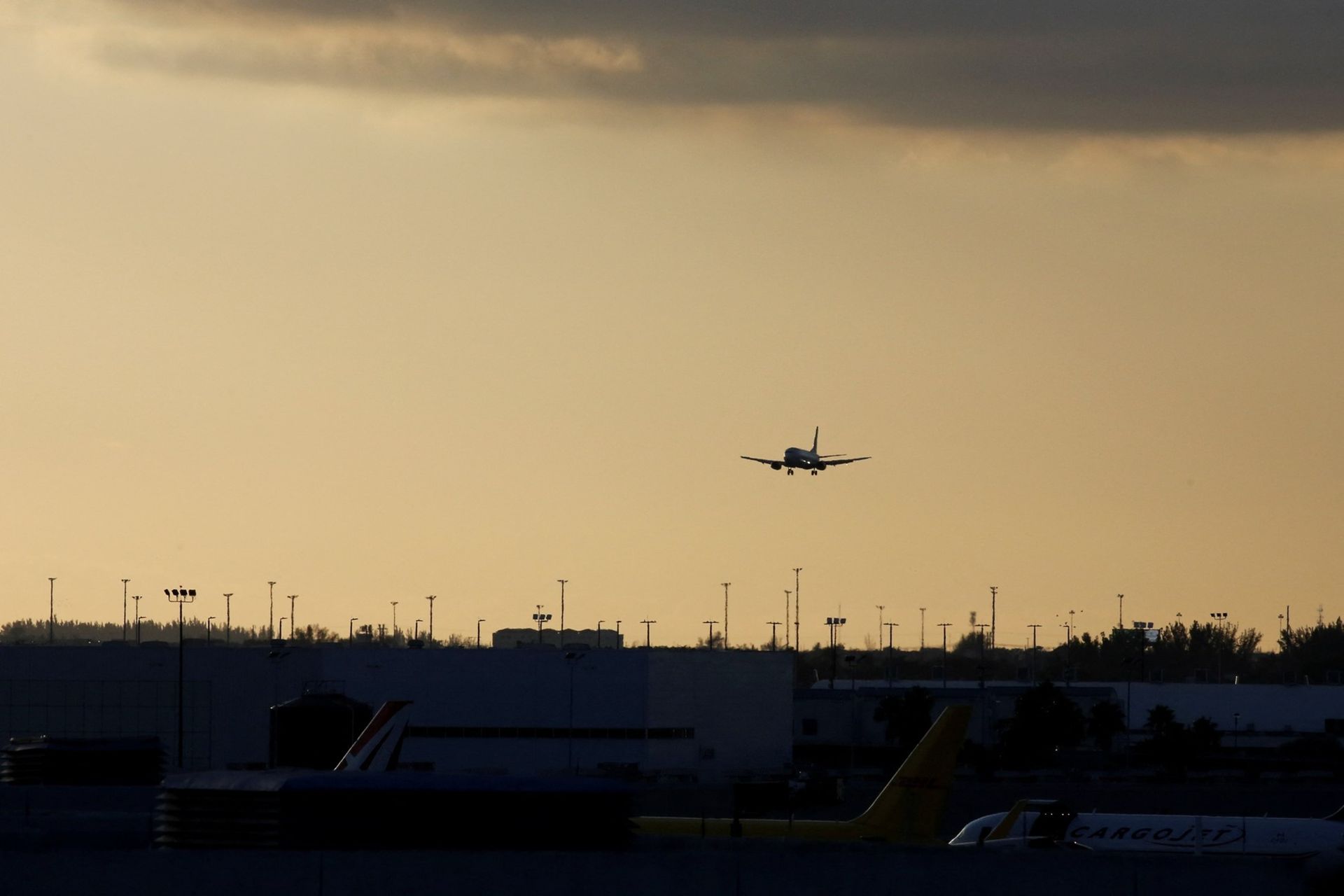
NTSB Final Report: Piper J3C (A1); Piper PA28 (A2)
The Airplanes Collided Nearly Head-On At 465 Ft Above Ground Level
Location: Winter Haven, Florida Accident Number: ERA23FA142
Date & Time: March 7, 2023, 14:00 Local Registration: N10510 (A1); N9221D (A2)
Aircraft: Piper J3C (A1); Piper PA28 (A2) Aircraft Damage: Substantial (A1); Substantial (A2)
Defining Event: Midair collision Injuries: 2 Fatal (A1); 2 Fatal (A2)
Flight Conducted Under: Part 91: General aviation - Instructional (A1); Part 91: General aviation - Instructional (A2)
Analysis: A float-equipped J3C was returning to its seaplane base for a water landing after a local flight. A PA-28 was performing power-off 180° landing maneuvers at an airport adjacent to the seaplane base. Shortly after the PA-28 pilot announced a left turn to the base leg over the airport common traffic advisory frequency (CTAF), the airplanes collided nearly head-on at 465 ft above ground level.
Postaccident examination of both airplanes revealed no evidence of any preimpact mechanical malfunctions or failures that would have precluded normal operation. The J3C was not equipped with a radio, nor was it required to be. With no radio in the J3C, neither they nor the crew in the PA-28 would have had any attentional cueing that would have alerted them to the other airplane. Neither airplane was equipped with avionics that would allow for an in-cockpit traffic display and only the PA-28 was equipped with ADS-B out. Review of video evidence from a nearby residence revealed that, given the two flight paths and the nearly head-on impact, the front-seat pilot of the J3C and the right-seat flight instructor of the PA-28 should have been able to detect the other airplane. Both crews efforts to detect the other likely would have been made more difficult by the complex background of sky and ground.
The PA-28 flight instructor’s postaccident toxicology testing results indicated that she had used the antihistamine medication cetirizine. Based on the cetirizine levels measured in cavity blood and tissue, it is possible that she may have been experiencing some associated sedation at the time of the accident. Although sedation can adversely affect vigilance, there is no clear evidence that this was a factor in the collision, which plausibly could have occurred in the absence of impairment.
Ethanol was detected at a very low level in a postmortem cavity blood specimen from the PA-28 pilot receiving instruction. Ethanol was not detected in his urine. These results indicate that some or all of the detected ethanol may have been from postmortem production, and that ethanol effects did not likely contribute to the accident.
The J3C was not equipped with a radio, nor was it required to be, and was therefore not self- announcing or able to receive transmissions on CTAF. With no radio in the JC3, neither they nor the crew in the PA-28 would have had any attentional cueing that would have alerted them to the other airplane. Neither airplane was equipped with avionics that would allow for an in-cockpit traffic display and only the PA-28 was equipped with ADS-B out. Had both flight crews had access to two-way radios and in-cockpit traffic displays, with ADS-B in and out, they likely would have been better able to see and avoid the impending collision.
Probable Cause and Findings: The National Transportation Safety Board determines the probable cause(s) of this accident to be -- The failure of both flight crews to see and avoid each other while operating in the airport environment.
FMI: www.ntsb.gov

Today in History
47 Years ago today: On 11 February 1978 Pacific Western Airlines flight 314, a Boeing 737-200, crashed following a collision with a snow removal vehicle at Cranbrook Airport, BC, Canada, killing 42 occupants; 7 survived the accident.
Date: Saturday 11 February 1978
Time: 12:55
Type: Boeing 737-275
Owner/operator: Pacific Western Airlines
Registration: C-FPWC
MSN: 20142/253
Year of manufacture: 1970
Engine model: P&W JT8D-9A
Fatalities: Fatalities: 42 / Occupants: 49
Other fatalities: 0
Aircraft damage: Destroyed, written off
Category: Accident
Location: Cranbrook Airport, BC (YXC) - Canada
Phase: Landing
Nature: Passenger - Scheduled
Departure airport: Calgary International Airport, AB (YYC/CYYC)
Destination airport: Cranbrook Airport, BC (YXC/CYXC)
Confidence Rating: Accident investigation report completed and information captured
Narrative:
Pacific Western Airlines flight 314, a Boeing 737-200, crashed following a collision with a snow removal vehicle at Cranbrook Airport, BC, Canada, killing 42 occupants; 7 survived the accident.
Pacific Western flight 314 was a scheduled service from Edmonton, AB (YEG) to Castlegar Airport, BC (YCG) with stops at Calgary, AB (YYC) and Cranbrook (YXC). The flight departed Calgary at 12:32 in the afternoon. The Boeing 737-200 climbed to FL200 which was reached at 12:38. Calgary ATC then reported to the Cranbrook Aeradio station that flight 314 was underway with an ETA of 13:05. At Cranbrook it was snowing with visibility reported as 3/4 of a mile. A radio equipped snow removal vehicle was sweeping the runway at the time. The Aeradio operator at Cranbrook alerted the driver of the vehicle about the incoming aircraft and gave him the ETA of 13:05; they both expected the flight would report by the "Skookum Beacon" on a straight-in approach to runway 16, thus giving the vehicle operator about seven minutes to get off the runway. At 12:46, while descending out of FL180, flight 314 contacted Cranbrook Aeradio. One minute later the crew were advised that snow removal was in progress. No further transmissions were received from the flight by Aeradio. The aircraft passed the Skookum beacon inbound on a straight-in instrument approach, and flew the ILS for runway 16 to touchdown. The aircraft touched down at 12:55 some 800 feet from the threshold and reverse thrust was selected. Suddenly the crew noticed a snow plough on the runway. A go-around was initiated immediately. However one of the thrust-reversers didn't fully re-stow because hydraulic power was automatically cut off at lift-off.
The aircraft became airborne prior to the 2000 foot mark, and flew down the runway at a height of 50 to 70 feet, flying over the snow plough. The left engine thrust reverser doors then deployed and the crew rapidly selected the flaps up from 40deg to 15deg. The airplane climbed to 300-400 feet, banked steeply to the left, lost height and side-slipped into the ground to the left of the runway. The aircraft broke up and caught fire.
CONCLUSIONS (FINDINGS):
1. The estimated time of arrival of the aircraft at Cranbrook, calculated by Calgary ATC, and used by Aeradio for advisory purposes was considerably in error and resulted in a traffic conftict between the arriving aircraft and a vehicle working on the runway.
2. The flight crew did not report by the Skookum beacon on final approach, as was the normal practice at Cranbrook, thereby allowing the incorrect ETA to remain undetected.
3. Regulatory provisions concerning mandatory pilot position reporting during instrument approaches were inadequate.
4. The interfaces between the organizations providing Air Traffic Services, Telecommunications (Aeradio) and Airports Services were not well enough developed to provide a reliable fail-safe flight information service.
5. The pilots lost control of the aircraft consequent upon the left engine thrust reverser deploying in flight when the aircraft was at low speed, and in a high drag configuration.
6. The FAA design standards under which the Boeing 737 was constructed did not adequatety provide for the possibility of an aborted landing after touchdown and thrust reverser initiation.
7. The lack of a suitable national system of incident reporting, investigation, and follow-up corrective action allowed operational problems to remain uncorrected.
8. Rescue efforts at the accident scene were hampered due to lack of a fire fighting vehicle capable of negotiating deep snow and shortage of trained rescue personnel.

